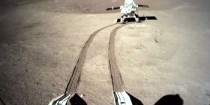NASA, Perseverance Rover Prepare for First Powered Flight of an Aircraft on Another Planet
March 28 (EIRNS)—NASA, and its Perseverance rover, are making preparations for the first attempt at the powered, controlled flight of an aircraft on another planet. This would be the 4 pound (1.8-kilogram) Ingenuity rotor craft, which is presently attached to the belly of the Perseverance rover, which touched down on Mars on Feb. 18.
From the point that Ingenuity is detached from Perseverance and deployed, it will have 30 Martian days, or sols (31 earth days) to conduct its test flight campaign. NASA is setting the test flight campaign at no earlier than April 8, which is less than 2 weeks away.
A NASA news release, “NASA Ingenuity Mars Helicopter Prepares for First Flight,” presents some of the challenging steps ahead:
“Flying in a controlled manner on Mars is far more difficult than flying on Earth. The Red Planet has significant gravity (about one-third that of Earth’s) but its atmosphere is just 1% as dense as Earth’s at the surface. During Martian daytime, the planet’s surface receives only about half the amount of solar energy that reaches Earth during its daytime, and nighttime temperatures can drop as low as minus 130 degrees Fahrenheit (minus 90 degrees Celsius), which can freeze and crack unprotected electrical components.
“To fit within the available accommodations provided by the Perseverance rover, the Ingenuity helicopter must be small. To fly in the Mars environment, it must be lightweight. To survive the frigid Martian nights, it must have enough energy to power internal heaters. The system – from the performance of its rotors in rarified air to its solar panels, electrical heaters, and other components – has been tested and retested in the vacuum chambers and test labs of NASA’s Jet Propulsion Laboratory in Southern California.
“’Every step we have taken since this journey began six years ago has been uncharted territory in the history of aircraft,’ said Bob Balaram, Mars Helicopter chief engineer at JPL. ‘And while getting deployed to the surface will be a big challenge, surviving that first night on Mars alone, without the rover protecting it and keeping it powered, will be an even bigger one.’”
At the same time, the Perseverance’s soulmates at Mars, the United Arab Emirates’ Hope satellite will study Mars’ daily and seasonal weather cycles and weather events in the lower atmosphere, as China’s Tianwen 1 satellite will locate a landing site for its rover, which rover will then carry out a mission that includes studying the morphology and structure of Mars, the current and past presence of water, and Mars’ ionosphere. This is a fun and interesting time for science.












